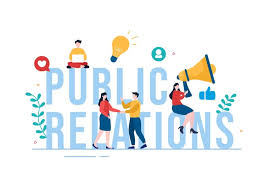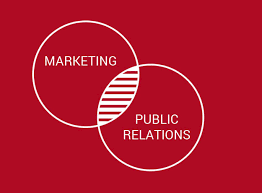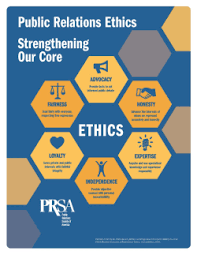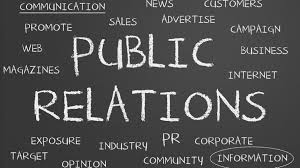Synergizing Public Relations and Digital Marketing Strategies for Brand Success
Public Relations and Digital Marketing: A Powerful Combination
In today’s fast-paced digital world, the realms of public relations (PR) and digital marketing have become increasingly intertwined. Both disciplines play crucial roles in shaping a brand’s reputation, engaging with audiences, and driving business growth.
Public Relations:
Public relations focuses on managing the communication between an organisation and its stakeholders. PR professionals work to build positive relationships with the media, influencers, customers, and the public at large. They craft compelling stories, manage crises effectively, and enhance brand credibility through earned media coverage.
Digital Marketing:
Digital marketing encompasses various online strategies to promote a brand, product, or service. This includes social media marketing, search engine optimisation (SEO), content marketing, email campaigns, and more. Digital marketers leverage data and analytics to target specific audiences, drive website traffic, and generate leads.
The Convergence:
As digital platforms continue to dominate how people consume information and interact with brands, PR professionals are increasingly incorporating digital marketing tactics into their strategies. By leveraging social media channels, online influencers, content creation tools, and data analytics, PR teams can amplify their message reach and engagement levels.
Benefits of Integration:
- Enhanced Visibility: Combining PR efforts with digital marketing techniques can increase brand visibility across multiple online channels.
- Targeted Messaging: Digital tools allow PR professionals to target specific audience segments with tailored messages for better engagement.
- Data-Driven Insights: Digital analytics provide valuable insights into audience behaviour that can inform PR strategies for improved results.
- Multichannel Engagement: Integrating PR with digital marketing enables brands to engage with audiences on various platforms simultaneously for a cohesive brand experience.
In Conclusion:
The synergy between public relations and digital marketing offers brands a powerful toolkit to connect with audiences effectively in today’s digital landscape. By embracing this convergence and adopting integrated communication strategies, businesses can enhance their brand presence, drive engagement, and achieve their marketing objectives successfully.
9 Essential Tips for Mastering Public Relations and Digital Marketing
- Public Relations
- Build strong relationships with journalists and media outlets for effective press coverage.
- Public Relations
- Public Relations
- Digital Marketing
- Utilize SEO strategies to improve website visibility and attract organic traffic.
- Digital Marketing
- Digital Marketing
- Public Relations
Public Relations
Public Relations plays a vital role in shaping a brand’s reputation and fostering positive relationships with key stakeholders. Through strategic communication efforts, PR professionals aim to generate media coverage, manage crises effectively, and enhance brand credibility. In today’s digital age, the integration of digital marketing tactics into PR strategies has become essential to amplify messaging reach and engagement levels across various online platforms. By leveraging social media channels, content creation tools, and data analytics, PR teams can effectively communicate brand stories and engage with audiences in a meaningful way.
Build strong relationships with journalists and media outlets for effective press coverage.
Building strong relationships with journalists and media outlets is a fundamental tip in the realm of public relations and digital marketing. By establishing trust and rapport with key media professionals, businesses can enhance their chances of securing valuable press coverage. Cultivating these relationships allows for more authentic and impactful storytelling, increasing the likelihood of positive media exposure that resonates with target audiences. Effective press coverage not only boosts brand visibility but also contributes to building credibility and trust among stakeholders, ultimately driving business growth and success in today’s competitive digital landscape.
Public Relations
Public Relations plays a vital role in shaping a brand’s reputation and fostering positive relationships with key stakeholders. By strategically managing communication efforts, PR professionals can effectively convey the brand’s values, messages, and stories to the public. Through media relations, influencer partnerships, and compelling storytelling, Public Relations helps build credibility and trust among audiences, ultimately contributing to the overall success of a brand’s communication strategy.
Public Relations
Public Relations plays a vital role in shaping a brand’s reputation and fostering positive relationships with key stakeholders. Through strategic communication efforts, PR professionals aim to enhance brand credibility, manage crises effectively, and secure valuable media coverage. In the realm of digital marketing, integrating PR tactics can amplify message reach and engagement levels across online platforms. By leveraging social media channels, influencers, and data analytics, PR teams can effectively communicate brand stories and connect with target audiences in a meaningful way. The synergy between Public Relations and digital marketing offers businesses a comprehensive approach to building brand visibility and establishing a strong online presence.
Digital Marketing
Digital marketing is a key component of modern communication strategies, playing a vital role in reaching and engaging target audiences online. By leveraging various digital channels such as social media, email campaigns, and search engine optimisation, businesses can effectively promote their brand, products, and services to a global audience. Digital marketing allows for precise targeting, measurable results, and the ability to adapt campaigns in real time based on data analytics. Embracing digital marketing techniques enables organisations to stay competitive in the digital age and connect with consumers in meaningful ways that drive business growth.
Utilize SEO strategies to improve website visibility and attract organic traffic.
By incorporating SEO strategies into your digital marketing efforts, you can enhance your website’s visibility and attract organic traffic effectively. Optimising your website content with relevant keywords, meta tags, and quality backlinks can improve your search engine rankings, making it easier for potential customers to discover your site. By focusing on SEO techniques, you can increase your online presence, drive more organic traffic to your website, and ultimately boost your brand’s visibility and credibility in the digital landscape.
Digital Marketing
Digital marketing plays a pivotal role in today’s interconnected world, offering businesses a diverse range of online strategies to promote their brand and engage with their target audience effectively. From social media campaigns to search engine optimisation and email marketing, digital marketing leverages the power of data and analytics to drive engagement, generate leads, and enhance brand visibility in the competitive online landscape. By embracing digital marketing tactics, businesses can reach their audience where they are most active, tailor messaging to specific demographics, and measure the impact of their campaigns with precision.
Digital Marketing
Digital marketing is a dynamic and essential component of modern communication strategies. By leveraging online platforms and tools, businesses can reach their target audiences effectively, drive engagement, and achieve measurable results. From social media campaigns to search engine optimisation techniques, digital marketing offers a versatile approach to promoting brands, products, and services in the digital age. Its data-driven nature allows for targeted messaging, precise audience targeting, and real-time performance tracking, making it a valuable asset for enhancing brand visibility and driving business growth in today’s competitive marketplace.
Public Relations
Public Relations plays a vital role in shaping a brand’s reputation and fostering positive relationships with key stakeholders. Through strategic communication efforts, PR professionals aim to enhance brand credibility, manage crises effectively, and secure valuable media coverage. In the context of digital marketing, integrating PR strategies can amplify messaging reach and engagement levels across online platforms. By leveraging digital tools and storytelling techniques, Public Relations can effectively convey a brand’s narrative to target audiences, ultimately strengthening brand perception and driving business growth.












